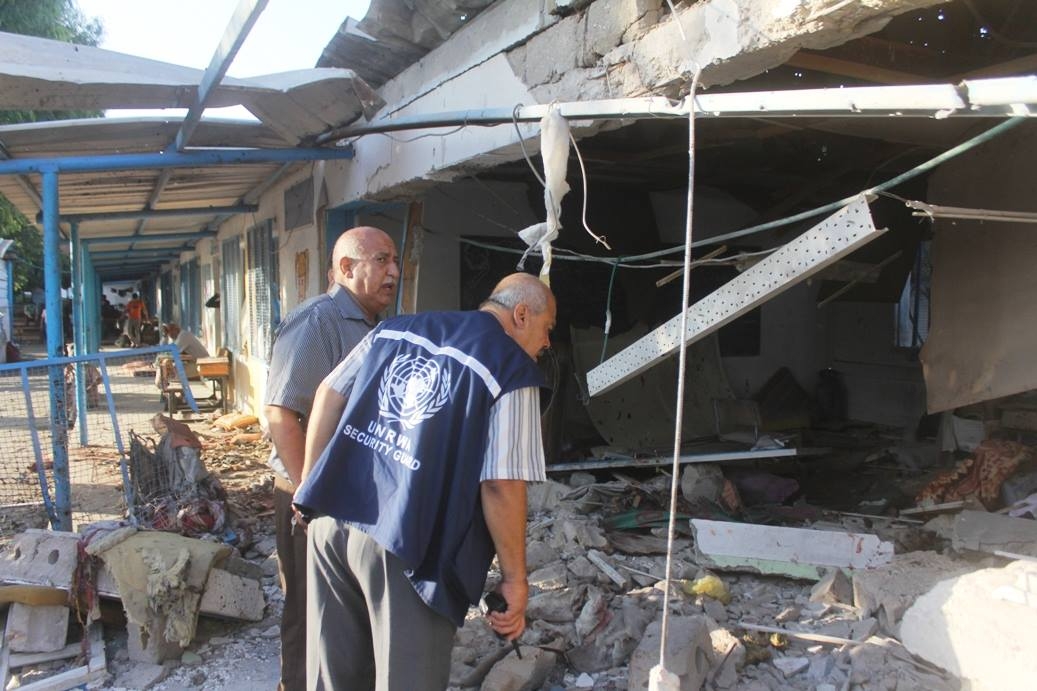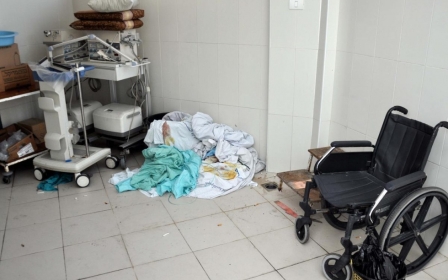Gazan students return to school, but not normalcy

Last week, the children of Gaza returned to school. Term was supposed to start on 24 August, but the start of the academic year had been delayed in the war-torn territory by more than two weeks.
For nine-year-old Ahmad Serhi from Gaza City's Zaitoon quarter, the start of the school year not only means a new classroom and teacher, but a new school after his previous school sustained significant damage during Israel's 52-day bombardment of Gaza during the recent war.
In an effort to restore a sense of normality as the school year began, Ahmad's father bought stationery and uniforms for Ahmad and his siblings.
However, as he went through the motions of a regular school year - which in Gaza included doing homework only in the daytime or by candlelight as a result of daily power cuts - a conspicuous abnormality hung over his children and others in Gaza as the psychological shock of the recent war becomes clearer. More so than stationery, the children need psychological help to overcome their trauma, Jameel Serhi said.
"They targeted schools in an attempt to disrupt our lives and hamper the education process," said Serhi, 50, a doctor told MEE. "They could claim they had done so for security reasons, but it's not justified to attack educational facilities, especially when displaced people were seeking shelters. They have attacked schools in the past three wars waged on Gaza."
Half a million students like Ahmad attend school in Gaza; about 24,000 of those students go to 252 UN-run schools throughout the Strip, while the rest attend state schools run by the government.
The Al-Shijaeyyah School, located in the eastern part of Gaza City, is one of 278 schools that were either totally or partially damaged during the war. Twenty four, like Al-Shijaeyyah, were totally destroyed and no longer able to accommodate students.
According to the Ministry of Education in Gaza, those 278 schools include 187 state schools and 91 UN-run schools. Three UN-run schools were attacked by Israeli warplanes or tank shelling while people were inside. In addition, 49 private schools, five colleges and one university - The Islamic University of Gaza were also damaged during the bombardment, plus 75 kindergartens and daycare centres sustained either partial or complete damage.
Israel has placed Gaza under a crippling land and naval blockade, and waged three all-out, large-scale attacks on the impoverished territory in late 2008, 2012 and this summer.
Even before the recent war, for many years UN and state schools in Gaza ran two shifts (morning and evening) to cope with the increasing number of students in the Strip. At least 200 new schools, in addition to the repairs of those that were damaged, are urgently needed, but Israel has refused to allow building materials into the Strip, according to UN officials. Israel justifies its ban on construction materials, arguing that Hamas uses these materials to build underground tunnels and bunkers.
In many schools that were not damaged by air strikes, thousands of displaced people are still living, with many homeless families refusing to leave the schools.
Raed Quider, 40, a psychologist and father of five, said that the schools which his children used to attend last year are one of these schools and he's worried that his children will miss out on counselling they need.
“My son and two daughters are very good at their studies. They earned high grades and I cannot imagine how they would study in overcrowded classrooms with up to 50 students in one class; it’s the only solution to absorb the large number of students whose schools were destroyed," Quider told MEE.
Recently, 7,800 staff members who work in Gazan schools were trained on how to deal with students as part of a three-week psycho-social programme, said the UN's Abu Hasna. He said an estimated 1,000 students who attend US schools will now suffer from different kinds of permanent disabilities and will require special arrangements. While he already acknowledges that the academic process this year will be badly affected, Quider hopes at least that his children will be able to get this kind of help.
"Children, including mine, need psychological treatment to help them get rid of their fears and trauma,” he said.
At the Islamic University of Gaza, school officials said much of the student body is struggling to find a way to pay their tuition in order to return to school where classes have yet to begin. The Strip's oldest and largest university was attacked on 2 August by Israeli warplanes that destroyed that main administration buildings.
Yahya Al-Sarraj, the deputy chairman of the university's external affairs, said that Israel attacked the university because of its reputation.
"Our work has been hampered by the war, our employees and staff are trying their best to resume their work after the administration building was attacked, which led to the loss of computers, databases, files and documents,” he said.
More than 60 percent of the university's students, many of whom have had their homes destroyed during the war, cannot afford to return to their studies.
“We urge generous donors to help us rebuild what was destroyed as soon as possible so that we can resume our academic duties," Al-Sarraj said.
Journalist Mohamed Awad contributed to this report from Gaza.
New MEE newsletter: Jerusalem Dispatch
Sign up to get the latest insights and analysis on Israel-Palestine, alongside Turkey Unpacked and other MEE newsletters
Middle East Eye delivers independent and unrivalled coverage and analysis of the Middle East, North Africa and beyond. To learn more about republishing this content and the associated fees, please fill out this form. More about MEE can be found here.





